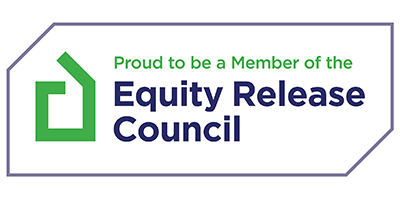In this article
Bridging loans are short-term financing options designed to help individuals or businesses manage the gap between outgoing and incoming funds.
These loans are often used in property transactions, providing quick access to funds that facilitate the purchase of new property before the sale of an existing one.
There are various types of bridging loans available, each tailored to meet specific needs and circumstances.
This article will explore the different types of bridging loans, explaining how they work and their typical applications.
Bridging Loans
A bridging loan is a short-term loan designed to provide immediate funds for various purposes, typically used to “bridge” a financing gap, such as purchasing a new property before selling an existing one.
These loans are usually secured against property, offering a quick and flexible solution for urgent financial needs.
How Bridging Loans Work
Bridging loans come in two types: open and closed. Open bridging loans have no fixed repayment date, suitable for those awaiting the sale of their property without a set completion date.
Closed bridging loans have a fixed repayment date, aligned with a known property sale completion date.
Interest rates on bridging loans are higher than conventional mortgages due to their short-term nature and quick arrangement.
These rates can be fixed or variable. Repayment options vary; some borrowers pay interest monthly, while others defer interest until the end of the loan term.
Uses of Bridging Loans
Bridging loans are primarily used in the property market. They enable quick property purchases, allowing buyers to act swiftly in competitive markets.
They are also useful for property refurbishment projects, enhancing a property’s value before refinancing or selling. Additionally, bridging loans can prevent property chains from collapsing.
For instance, if a buyer’s purchase depends on selling their property, a bridging loan provides the necessary funds to proceed, maintaining the chain.
Advantages and Considerations
The main advantages of bridging loans are speed and flexibility. They can be arranged quickly, often within days, making them ideal for urgent financial needs.
Beyond property transactions, they are versatile and can be used for business expansion or short-term cash flow issues.
However, higher interest rates and fees are associated with bridging loans. Borrowers should have a clear exit strategy, such as selling property or refinancing, to repay the loan.
Without a solid repayment plan, the cost can escalate, leading to financial strain.
Large Bridging Loan
A large bridging loan is a short-term financial solution designed to provide substantial funds for significant property transactions or large-scale projects.
These loans are typically secured against high-value properties and offer a quick and flexible way to bridge financial gaps when immediate capital is required.
How Large Bridging Loans Work
Large bridging loans function similarly to standard bridging loans but involve higher loan amounts. They are available in two main types: open and closed.
Open large bridging loans have no fixed repayment date, suitable for borrowers awaiting a substantial property sale without a definite completion date.
Closed large bridging loans have a fixed repayment date, typically aligned with a known date for a high-value property sale or the completion of a large project.
Interest rates on large bridging loans are generally higher than those on conventional mortgages due to their short-term nature and quick arrangement.
These rates can be fixed or variable. Repayment options vary; some borrowers prefer to pay interest monthly, while others defer interest until the end of the loan term.
Uses of Large Bridging Loans
Large bridging loans are primarily used in high-value property transactions. They enable buyers to act swiftly in competitive markets, securing valuable properties before the sale of existing assets.
This is particularly useful in preventing property chains from collapsing, as the loan provides the necessary funds to proceed with a purchase when a sale is still pending.
Additionally, large bridging loans are beneficial for extensive property refurbishment projects.
They allow owners to enhance the value of high-value properties before refinancing or selling them, potentially increasing their return on investment.
Large bridging loans can also be used for significant business expansions or other substantial investments requiring immediate capital.
Regulated Bridging Loan
A regulated bridging loan is a short-term loan overseen by the Financial Conduct Authority (FCA) in the UK, designed to provide immediate funds for property transactions involving residential properties.
These loans offer a secure and flexible way to bridge financial gaps while ensuring borrower protection through stringent regulatory standards.
How Regulated Bridging Loans Work
Regulated bridging loans are typically used for residential property transactions where the property in question is either the borrower’s primary residence or will be occupied by a family member.
These loans come in two main types: open and closed.
Open regulated bridging loans have no fixed repayment date, suitable for those awaiting the sale of their property without a set completion date.
Closed regulated bridging loans, on the other hand, have a fixed repayment date aligned with a known completion date for the property sale.
Interest rates on regulated bridging loans are generally higher than those on conventional mortgages due to their short-term nature and the speed at which they are arranged.
These rates can be either fixed or variable. Repayment options also vary, with some borrowers opting to pay interest monthly, while others choose to defer interest until the end of the loan term.
Uses of Regulated Bridging Loans
Regulated bridging loans are primarily used in residential property transactions.
They enable homeowners to purchase a new property before selling their existing one, ensuring they can act swiftly in competitive markets.
This is particularly useful for preventing property chains from collapsing, as the loan provides the necessary funds to proceed with a purchase while waiting for the sale of the current property.
These loans can also be used for property refurbishment projects on residential properties.
This allows homeowners to enhance the value of their property before refinancing or selling it, potentially increasing their return on investment.
Unregulated Bridging Loan
An unregulated bridging loan is a short-term loan not overseen by the Financial Conduct Authority (FCA) in the UK.
These loans are typically used for non-residential property transactions or investment purposes, offering a flexible and quick solution for bridging financial gaps without the constraints of regulatory oversight.
How Unregulated Bridging Loans Work
Unregulated bridging loans are used for transactions involving properties that are not intended as the borrower’s primary residence, such as certain types of properties, buy-to-let investments, or land acquisitions. These loans come in two main types: open and closed.
Open unregulated bridging loans have no fixed repayment date, making them suitable for borrowers awaiting the sale of an investment property without a set completion date.
Closed unregulated bridging loans have a fixed repayment date, aligned with a known date for property sale or project completion.
Interest rates on unregulated bridging loans are generally higher than those on conventional mortgages due to their short-term nature and quick arrangement.
These rates can be fixed or variable. Repayment options vary; some borrowers prefer to pay interest monthly, while others defer interest until the end of the loan term.
Uses of Unregulated Bridging Loans
Unregulated bridging loans are primarily used in non-residential property transactions. They enable investors to act swiftly in competitive markets, securing properties before the sale of existing assets.
This is particularly useful for purchasing certain properties, buy to let investments, or land for development.
Additionally, unregulated bridging loans are beneficial for property refurbishment or development projects.
They allow investors to enhance the value of properties before refinancing or selling them, potentially increasing their return on investment.
These loans can also be used for business expansions or other substantial investments requiring immediate capital.
Bridging Loan to Buy a House
A bridging loan to buy a house is a short-term financial solution that provides immediate funds for purchasing a new residential property before selling an existing one.
These loans are particularly useful in competitive property markets, enabling buyers to secure their new home quickly and efficiently.
How Bridging Loans to Buy a House Work
Bridging loans to buy a house can be either open or closed.
Open bridging loans have no fixed repayment date, suitable for those awaiting the sale of their current property without a set completion date.
Closed bridging loans have a fixed repayment date, aligned with a known date for the sale of the existing property or completion of long-term financing.
Interest rates on bridging loans to buy a house are higher than those on conventional mortgages due to their short-term nature and rapid arrangement.
These rates can be fixed or variable. Repayment options vary, with some borrowers opting to pay interest monthly, while others choose to defer interest until the end of the loan term.
Uses of Bridging Loans to Buy a House
The primary use of bridging loans to buy a house is to facilitate quick property purchases. They allow buyers to act swiftly in competitive markets, securing a new home before their current property is sold.
This is particularly beneficial when a homeowner has found their ideal property but hasn’t yet completed the sale of their existing home. Bridging loans can also be used for property renovation projects.
Homebuyers may use the loan to purchase and refurbish a new property, increasing its value before securing a traditional mortgage or selling their old home.
Second Charge Bridging Loan
A second charge bridging loan is a short-term loan secured against a property that already has an existing mortgage.
This type of loan provides additional funds for various purposes, leveraging the equity in the property while the first mortgage remains in place.
It offers a flexible and rapid solution for immediate financial needs without disturbing the primary mortgage.
How Second Charge Bridging Loans Work
Second charge bridging loans are secured against the borrower’s property as a second-ranking charge behind the existing mortgage. They come in two main types: open and closed.
Open second charge bridging loans have no fixed repayment date, suitable for borrowers awaiting the sale of their property without a set completion date.
Closed second charge bridging loans have a fixed repayment date, typically aligned with a known date for property sale or refinancing.
Interest rates on second charge bridging loans are generally higher than those on conventional mortgages due to their short-term nature and quick arrangement.
These rates can be fixed or variable. Repayment options vary; some borrowers prefer to pay interest monthly, while others defer interest until the end of the loan term.
Uses of Second Charge Bridging Loans
Second charge bridging loans are versatile and can be used for various purposes.
They are commonly used to fund property purchases, allowing buyers to secure a new property before selling their existing one. This is particularly useful in competitive markets where quick action is required.
Additionally, second charge bridging loans can be used for property refurbishment projects. Borrowers can use the loan to finance renovations, enhancing the property’s value before selling or refinancing it.
These loans are also beneficial for covering short-term cash flow issues or funding business expansion, using the equity in the property without affecting the primary mortgage.
Refurbishment Bridging Loan (Renovation Mortgage)
A refurbishment bridging loan, also known as a renovation mortgage, is a short-term loan designed to provide immediate funds for property refurbishment or renovation projects.
These loans enable property owners to enhance their property’s value quickly, making them ideal for projects that require fast financing to complete renovations before refinancing or selling.
How Refurbishment Bridging Loans Work
Refurbishment bridging loans are secured against the property being renovated. They come in two main types: open and closed.
Open refurbishment bridging loans have no fixed repayment date, suitable for those awaiting the sale of the property or securing long-term financing without a set completion date.
Closed refurbishment bridging loans have a fixed repayment date, aligned with a known date for project completion, sale, or refinancing.
Interest rates on refurbishment bridging loans are generally higher than those on conventional mortgages due to their short-term nature and quick arrangement.
These rates can be fixed or variable. Repayment options vary, with some borrowers opting to pay interest monthly, while others choose to defer interest until the end of the loan term.
Uses of Refurbishment Bridging Loans
Refurbishment bridging loans are primarily used for property renovation projects.
They provide the necessary funds to start and complete renovations, allowing property owners to improve their property’s value quickly.
This is particularly useful for buy to let investors, property developers, or homeowners looking to enhance their property’s market appeal before selling or refinancing.
These loans can be used for various types of refurbishments, including cosmetic updates, structural repairs, and major overhauls.
By financing these improvements, borrowers can increase their property’s value, making it more attractive to potential buyers or tenants and enabling better financing terms when transitioning to a long-term mortgage.
Bridging Loan for Auction Property
A bridging loan for auction property is a short-term financial solution designed to provide immediate funds for purchasing properties at auction.
These loans are particularly useful for buyers who need to secure financing quickly to meet the tight deadlines associated with auction purchases.
How Bridging Loans for Auction Property Work
Bridging loans for auction properties are secured against the property being purchased. They come in two main types: open and closed.
Open bridging loans have no fixed repayment date, suitable for buyers awaiting the sale of another property or securing long-term financing without a set completion date.
Closed bridging loans have a fixed repayment date, aligned with a known date for the sale of an existing property or completion of long-term financing.
Interest rates on bridging loans for auction properties are generally higher than those on conventional mortgages due to their short-term nature and quick arrangement.
These rates can be fixed or variable. Repayment options vary, with some borrowers opting to pay interest monthly, while others choose to defer interest until the end of the loan term.
Uses of Bridging Loans for Auction Property
The primary use of bridging loans for auction property is to facilitate quick property purchases at auctions. Auction sales typically require the buyer to complete the purchase within a short period, often 28 days.
Bridging loans provide the necessary funds to meet these tight deadlines, allowing buyers to act swiftly and secure their desired properties.
These loans are also beneficial for buyers who plan to renovate the auction property before selling or refinancing it.
The quick access to funds enables buyers to start renovations immediately, enhancing the property’s value and marketability.
Development Finance
Development finance is a type of short-medium term funding designed to provide capital for property development projects.
This financial solution is ideal for developers looking to fund new builds, major refurbishments, or conversions.
Development finance is typically tailored to the specific needs of each project, offering a flexible way to cover construction costs from start to finish.
How Development Finance Works
Development finance is usually secured against the property or land being developed. The loan is typically released in stages, known as tranches, based on the progress of the development project.
Initial funds are provided to purchase the land or property, with subsequent releases tied to specific milestones, such as completion of the foundation, structure, or final finish.
Interest rates on development finance loans are higher than those on conventional mortgages due to their short- to medium-term nature and higher risk. These rates can be fixed or variable.
Repayment options vary; some borrowers opt to pay interest monthly, while others defer interest until the end of the loan term, often when the developed property is sold or refinanced.
Uses of Development Finance
Development finance is primarily used for large-scale property development projects. It enables developers to fund the entire construction process, from land acquisition to final completion.
This is particularly useful for projects that require substantial upfront investment and ongoing capital to progress through various development stages.
These loans can be used for a variety of development types, including residential, and mixed-use projects.
They are also suitable for major refurbishments and conversions, allowing developers to transform existing properties into high-value assets.
Residential Bridging Loan
A residential bridging loan is a short-term financial solution designed to provide immediate funds for residential property transactions.
These loans are particularly useful for homeowners looking to purchase a new home before selling their existing one, offering a flexible and rapid way to bridge the financial gap.
How Residential Bridging Loans Work
Residential bridging loans are secured against residential properties, either the one being sold or the one being purchased. They come in two main types: open and closed.
Open residential bridging loans have no fixed repayment date, suitable for those awaiting the sale of their property without a set completion date.
Closed residential bridging loans have a fixed repayment date, aligned with a known date for the sale of the existing property or completion of long-term financing.
Interest rates on residential bridging loans are generally higher than those on conventional mortgages due to their short-term nature and quick arrangement.
These rates can be fixed or variable. Repayment options vary; some borrowers prefer to pay interest monthly, while others defer interest until the end of the loan term.
Uses of Residential Bridging Loans
The primary use of residential bridging loans is to facilitate quick property purchases.
They enable homeowners to act swiftly in competitive markets, securing a new home before their current property is sold.
This is particularly beneficial in preventing property chains from collapsing, as the loan provides the necessary funds to proceed with a purchase while waiting for the sale of the existing property.
Additionally, residential bridging loans can be used for property refurbishment projects. Homeowners can use the loan to finance renovations, enhancing the property’s value before refinancing or selling it.
This can lead to a higher return on investment and better financing terms for long-term mortgages.
Speak to an Advisor – It’s Free!
Schedule a free callback from one of our experts today.
- All situations considered
- Transparent and honest mortgage advice
- We search 1000s of purchase and remortgage deals
Our customers rate us 4.9/5
The Importance of Bridging Loan Advice
Understanding the different types of bridging loans is crucial for selecting the right option for your financial needs and property goals.
Bridging loans offer versatile, short-term funding solutions, whether you’re purchasing a new home, renovating a property, or securing an investment.
Given the complexity and variety of these loans, consulting with an independent mortgage broker is highly recommended.
Our team of bridging specialists can provide expert advice, helping you explore all of your options and find the most suitable bridging loan for your circumstances.







